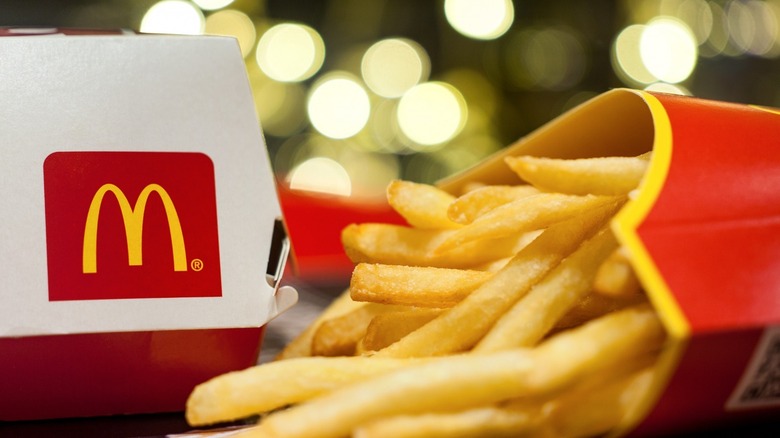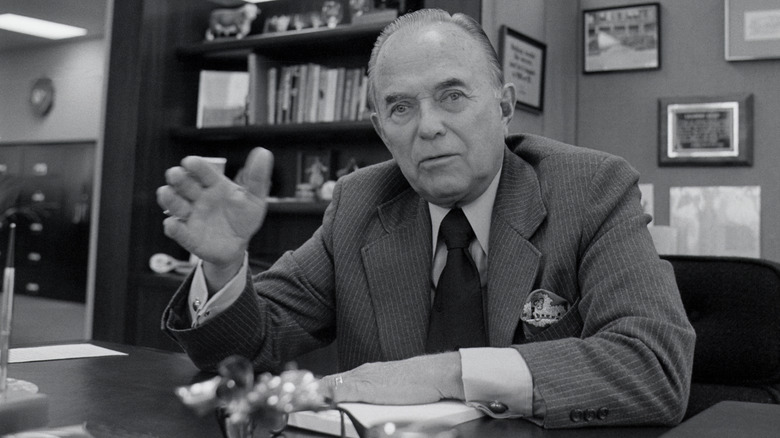How McDonald's Got Its Name
Whether you love it or hate it, there's no denying that you know the McDonald's names. When you drive past a pair of golden arches, you know what is being served there, how much a meal costs, and you probably know what it tastes like, too. You know these things because McDonald's is everywhere. Over the span of 83 years, McDoanld's went from a singular roadside food stand to a global sensation with nearly 40,000 locations spanning 100 different countries. And yet, of the 69 million people McDonald's serves each day, few know the story of how the restaurant got its name.
Many might assume that McDonald's was named after its founder. And while that is technically the case, the man who most often gets the credit isn't a McDonald at all. Ray Kroc, often touted as "the man who made McDonald's," has been helming the operation since he purchased the company from its real founders in 1961 – and they most certainly bear the McDonald name.
Capitalizing on the economic boom that followed the end of the Great Depression, Brothers Maurice and Richard McDonald wisely opened a roadside food stand in San Bernardino, California in 1940. The flimsy, open-air structure, called McDonald's Barbeque, offered a laundry list of food options that would be delivered to your car window by a fleet of pretty carhop girls, and it was a hit.
New owner, same name
Despite eight years of continued success and growing sales, in 1948, brothers Maurice and Richard McDonald opted to close the doors of their roadside food stand for three months in order to restructure their business model and make it more efficient. In those months, the brothers developed a method they referred to as the Speedee Service System which would later become the model for quick service restaurants around the globe.
Upon reopening, the McDonald brothers utilized the concept of the assembly line to deliver the streamlined menu items (which included burgers, fries, and milkshakes) to their customers at record speed. And by ditching the carhop girls in favor of a self-service window, they were able to cut labor costs enough to offer competitive prices.
With many impressed by the efficiency of their business, the McDonald brothers began selling the formula for their success to aspiring restaurateurs for a fee of $950. But McDonald's didn't become a franchise until Ray Kroc, the man who sold the McDonald brothers the blenders they used to whip up their famous milkshakes, entered the scene.
In 1955, Kroc bought the rights to franchise McDonald's across the nation, with the brothers receiving 0.5% royalties. Wanting to get out from under the brothers' thumbs, Kroc eventually convinced the McDonalds to sell him their company for $2.7 million in 1961, at which point he dubiously positioned himself as the face of the McDonald's empire and the genius behind the business model.

